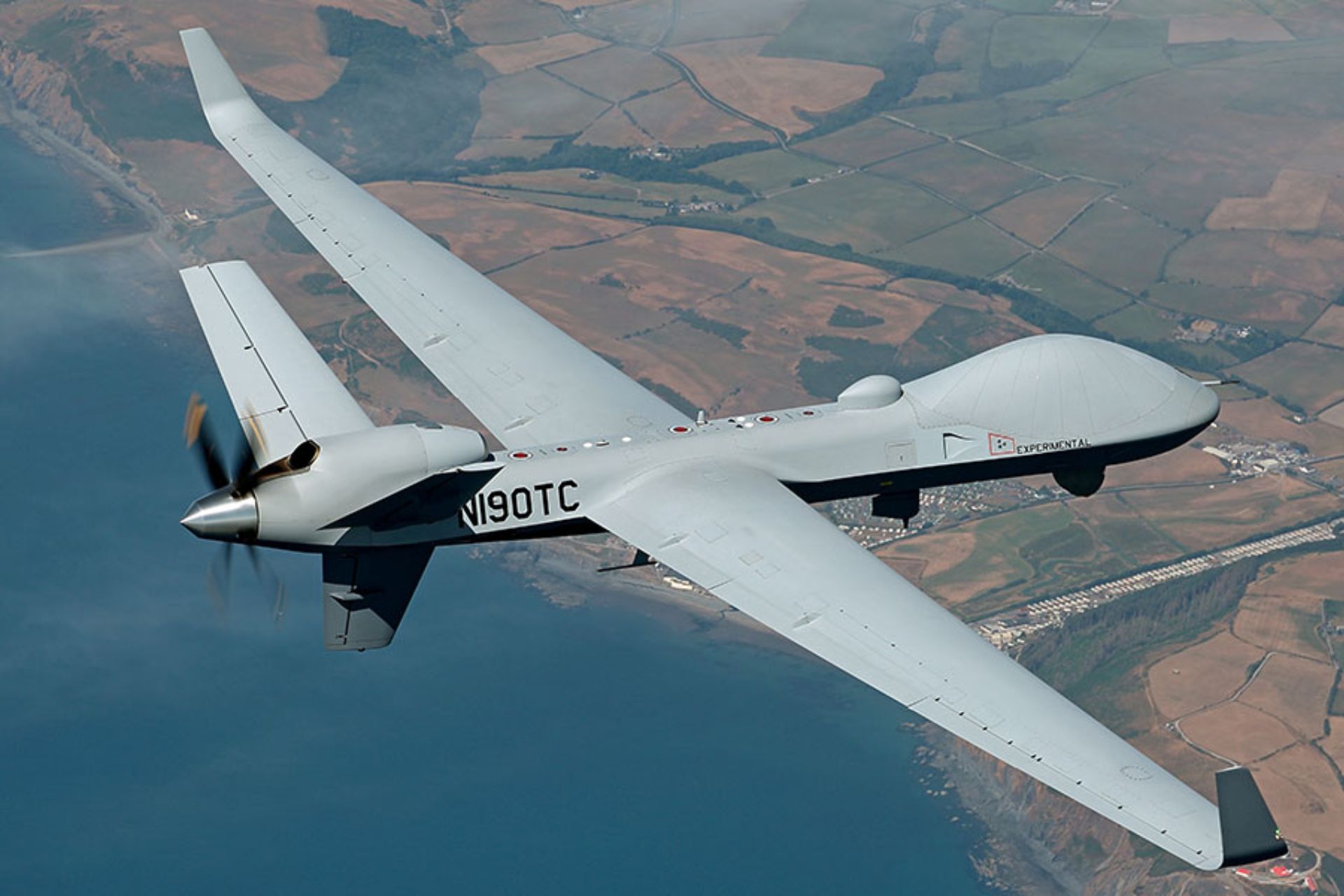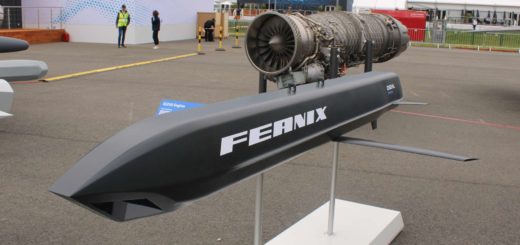Belgium to Strengthen Intelligence and Strike Power with First MQ-9B SkyGuardian Drone in August 2025

{loadposition bannertop}
{loadposition sidebarpub}
Belgium is set to take a significant step in strengthening its military capabilities with the delivery, scheduled for August, of the first MQ-9B SkyGuardian drone. Defence Minister Theo Francken announced this on Wednesday during a parliamentary commission, adding that the first flight of the American-made aircraft is planned for September. A second unit is expected in the autumn, as part of a program launched in 2018 when Belgian authorities decided to acquire four “Remotely Piloted Aircraft Systems” (RPAS). However, technical issues encountered during production testing resulted in a two-year delay on the initial schedule.Follow Army Recognition on Google News at this link
The Belgium SkyGuardia will be used for ISR missions but may also be armed if required (Picture source: General Atomics)
For several months, the Belgian Defence has been actively preparing for the arrival of these new systems. The infrastructure required to host the SkyGuardian drones is nearly completed, and crew training has already begun. Several pilots underwent intensive simulator training before completing their instruction with test flights conducted this year. Minister Francken indicated that a second wave of training is scheduled for February 2026 to complete the skills development of the operators.
The MQ-9B SkyGuardian, developed by General Atomics Aeronautical Systems, is the most advanced version of the well-known MQ-9 Reaper drone. Designed for long-endurance and high-altitude missions, the SkyGuardian complies with international civil aviation standards, including STANAG 4671, enabling its integration into civilian airspace. With a wingspan of nearly 24 meters and a maximum takeoff weight of 5,670 kg, it can operate for over 40 hours and reach altitudes of up to 40,000 feet. Powered by a 900-horsepower Honeywell TPE331-10 turboprop engine, the drone can cover distances up to 11,000 km, making it suitable for strategic surveillance and ISR (Intelligence, Surveillance, Reconnaissance) missions.
The SkyGuardian is equipped with nine hardpoints capable of carrying a wide range of weapons, including up to ten Brimstone air-to-ground missiles or 500 lb Paveway IV guided bombs. It features the Lynx II synthetic aperture radar, an AN/DAS-1 MTS-B electro-optical infrared sensor, optional maritime radars, and an Automatic Identification System (AIS) for maritime detection. The drone can also be fitted with an anti-submarine warfare kit that includes sonobuoy dispensers. Additional configurations allow for electronic warfare, signals intelligence (SIGINT), communications relay, and airborne early warning. The SkyGuardian is compatible with tactical data link systems like Link-16, enhancing its ability to operate in contested environments while ensuring interoperability with allied forces.
The arrival of the SkyGuardian is part of a broader strategic transformation of the Belgian Armed Forces, particularly in the field of ISR capabilities. For the first time, Belgium has decided that these drones may be armed, a political decision approved by the new governing majority. Minister Francken emphasized that the use of the MQ-9B will adhere to strict, politically approved rules of engagement. The drones will primarily conduct surveillance and intelligence missions, but they may also be deployed for targeted strikes if required by operational needs. No specific region of deployment has been defined yet, allowing for flexible operational use.
This capability enhancement comes as Belgium is increasingly involved in international military technology efforts. In May, the Belgian government announced its participation in the “drone coalition” in support of Ukraine, a multinational initiative aimed at strengthening Kyiv’s aerial capabilities against Russian aggression. In this context, Major General Michel Van Strythem was promoted in June to the rank of lieutenant general, becoming the first officer to lead the Belgian Defence Task Force “Drones and Innovation,” underscoring the strategic importance now given to these technologies.
The delivery of the SkyGuardian thus marks a turning point for Belgian Defence, providing a new-generation projection and surveillance capability aligned with the evolution of contemporary warfare. The decision to arm these drones, a subject of debate within the government coalition, reflects a determination to equip the country with versatile tools capable of addressing a broad range of threats. The expansion of the dedicated drone Task Force and Belgium’s participation in the international coalition supporting Ukraine further highlight the country’s commitment to adapting its resources to current and future security challenges.

{loadposition bannertop}
{loadposition sidebarpub}
Belgium is set to take a significant step in strengthening its military capabilities with the delivery, scheduled for August, of the first MQ-9B SkyGuardian drone. Defence Minister Theo Francken announced this on Wednesday during a parliamentary commission, adding that the first flight of the American-made aircraft is planned for September. A second unit is expected in the autumn, as part of a program launched in 2018 when Belgian authorities decided to acquire four “Remotely Piloted Aircraft Systems” (RPAS). However, technical issues encountered during production testing resulted in a two-year delay on the initial schedule.
Follow Army Recognition on Google News at this link
The Belgium SkyGuardia will be used for ISR missions but may also be armed if required (Picture source: General Atomics)
For several months, the Belgian Defence has been actively preparing for the arrival of these new systems. The infrastructure required to host the SkyGuardian drones is nearly completed, and crew training has already begun. Several pilots underwent intensive simulator training before completing their instruction with test flights conducted this year. Minister Francken indicated that a second wave of training is scheduled for February 2026 to complete the skills development of the operators.
The MQ-9B SkyGuardian, developed by General Atomics Aeronautical Systems, is the most advanced version of the well-known MQ-9 Reaper drone. Designed for long-endurance and high-altitude missions, the SkyGuardian complies with international civil aviation standards, including STANAG 4671, enabling its integration into civilian airspace. With a wingspan of nearly 24 meters and a maximum takeoff weight of 5,670 kg, it can operate for over 40 hours and reach altitudes of up to 40,000 feet. Powered by a 900-horsepower Honeywell TPE331-10 turboprop engine, the drone can cover distances up to 11,000 km, making it suitable for strategic surveillance and ISR (Intelligence, Surveillance, Reconnaissance) missions.
The SkyGuardian is equipped with nine hardpoints capable of carrying a wide range of weapons, including up to ten Brimstone air-to-ground missiles or 500 lb Paveway IV guided bombs. It features the Lynx II synthetic aperture radar, an AN/DAS-1 MTS-B electro-optical infrared sensor, optional maritime radars, and an Automatic Identification System (AIS) for maritime detection. The drone can also be fitted with an anti-submarine warfare kit that includes sonobuoy dispensers. Additional configurations allow for electronic warfare, signals intelligence (SIGINT), communications relay, and airborne early warning. The SkyGuardian is compatible with tactical data link systems like Link-16, enhancing its ability to operate in contested environments while ensuring interoperability with allied forces.
The arrival of the SkyGuardian is part of a broader strategic transformation of the Belgian Armed Forces, particularly in the field of ISR capabilities. For the first time, Belgium has decided that these drones may be armed, a political decision approved by the new governing majority. Minister Francken emphasized that the use of the MQ-9B will adhere to strict, politically approved rules of engagement. The drones will primarily conduct surveillance and intelligence missions, but they may also be deployed for targeted strikes if required by operational needs. No specific region of deployment has been defined yet, allowing for flexible operational use.
This capability enhancement comes as Belgium is increasingly involved in international military technology efforts. In May, the Belgian government announced its participation in the “drone coalition” in support of Ukraine, a multinational initiative aimed at strengthening Kyiv’s aerial capabilities against Russian aggression. In this context, Major General Michel Van Strythem was promoted in June to the rank of lieutenant general, becoming the first officer to lead the Belgian Defence Task Force “Drones and Innovation,” underscoring the strategic importance now given to these technologies.
The delivery of the SkyGuardian thus marks a turning point for Belgian Defence, providing a new-generation projection and surveillance capability aligned with the evolution of contemporary warfare. The decision to arm these drones, a subject of debate within the government coalition, reflects a determination to equip the country with versatile tools capable of addressing a broad range of threats. The expansion of the dedicated drone Task Force and Belgium’s participation in the international coalition supporting Ukraine further highlight the country’s commitment to adapting its resources to current and future security challenges.







